- Home
- Hanna Hamilton
A Charming Cavalryman for Clementine_A Historical Romance Novel Based on True Events
A Charming Cavalryman for Clementine_A Historical Romance Novel Based on True Events Read online
A Charming Cavalryman for Clementine
A Historical Romance Based on True Events
Hanna Hamilton
Edited by
Maggie Berry
Copyright © 2017 by Hanna Hamilton
All rights reserved.
No part of this book may be reproduced in any form or by any electronic or mechanical means, including information storage and retrieval systems, without written permission from the author, except for the use of brief quotations in a book review.
Contents
A Thank You Gift
About the Book
Author’s Note
The Charge Of The Light Brigade
Chapter 1
Chapter 2
Chapter 3
Chapter 4
Chapter 5
Chapter 6
Chapter 7
Chapter 8
Chapter 9
Chapter 10
Chapter 11
Chapter 12
Chapter 13
Chapter 14
Chapter 15
Chapter 16
Chapter 17
Chapter 18
Chapter 19
Chapter 20
Chapter 21
Chapter 22
Chapter 23
Chapter 24
Chapter 25
Chapter 26
Chapter 27
Chapter 28
Chapter 29
Chapter 30
Chapter 31
Chapter 32
Chapter 33
Chapter 34
Epilogue
Diana Adores the Puzzled Earl
Chapter 1
Chapter 2
Chapter 3
Chapter 4
Also by Hanna Hamilton
About the Author
A Thank You Gift
Thanks a lot for purchasing my book. It really means a lot to me, because this is the best way to show me your love.
As a Thank You gift I have written a full length novel for you called A True Lady. It’s only available to people who have downloaded one of my books and you can get your free copy by tapping this link here.
Once more, thanks a lot for your love and support.
Hanna Hamilton
About the Book
On the cusp of war that would change the fate of empires, Clementine, the daughter of an earl, finds herself in the lush English countryside attending her younger sister’s wedding. For a Victorian girl, there is nothing more important in life than the marriage to a suitable man.
But Clementine is different. She wants more from life than to just walk in her husband’s shadow. Like the formidable Florence Nightingale, she has a dream to become a nurse of the Empire.
Her path crosses with the handsome and dashing hussar, Major Stirling Whitt Whittaker. Her whole world turns upside down. The youngest son of one of the country’s foremost peers takes her breath away, altering her onetime obdurate view on marriage. A whirlwind love affair ensues, leading to young Stirling asking for Clementine’s hand in marriage.
But as fate would have it, the Crimean War drags them apart, twisting and weaving the threads of destiny. Will her Stirling survive the horrors of war unscathed or will she have to treat him like the many other hundreds of men coming from the front?
The near-suicidal charge of the Light Brigade turns Stirling into a different man. Despairing and working in insufferable conditions, Clementine zealously hurls herself into her chosen profession and prays for a miracle that her fiancé might somehow return to her.
Author’s Note
The subject of the Crimean War and even more so the epoch of Queen Victoria’s rule has captured many people’s minds. The famous poem by Alfred, Lord Tennyson about the Charge of the Light Brigade sheds some light on that fateful gallop towards the Russian cannons. Apart from traditional historical sources, eyewitnesses’ prose and poetic words, there is another very viable way to learn more about what happened. The Crimean War was the first global conflict to have ever been photographed by camera. Not only that, but also many facets of Victorian life would fall to the camera’s lens, giving me plentiful data from which to write a romance story with an authentic historical twist.
If you have an interest in seeing some of those photographs, you can get a look at them by following this link: http://www.mirror.co.uk/news/uk-news/victorian-era-britain-pictures-amazing-267678. It truly is a fascinating depiction of Victorian Britain.
With that in mind, I have done my upmost to remain as true as possible to the events that unfolded around the Crimean War. Everything from the clothing, weapons, the descriptions of towns, countryside and way of life are as true to form as can be, based on the reliability of the historical sources.
What is marvellous is that the dialogues and messages exchanged between the British commanding officers before the fateful Charge of the Light Brigade actually took place in precisely that manner. On that note, I would like to remind you that Lords Raglan, Airy, Cardigan and Lucan were the actual commanders in the British expeditionary force. James Brudenell, 7th Earl of Cardigan behaved very much in the way I described in the novel. Although, sometimes, I may have exaggerated a little to make him appear the partial antihero that he was. I say that because he was arrogant to the point of being dangerous and at the same time the earl was generous and very brave. The enmity he shared with Lucan is also true.
Perhaps the single most inspiring figure, apart from maybe Queen Victoria, was Florence Nightingale. Here, I also attempted to tread on the factual line that historical sources provided me. She was as described in the book, a very hardworking, focused and compassionate individual. In a way she was not typical of her sex’s contemporaries where marriage and the bearing of children were a lady’s number one priority. Modern nursing and the effective management of war and peacetime hospitals are accredited to this great lady.
The period was ripe with exciting and sometimes frightening events involving many different types of people, allowing for a perfect background to write an entertaining and heart-warming Victorian romance novel.
Saying that, I must add that the protagonists are of course children of my imagination. I speak of Stirling Whitt Whittaker, Clementine and Elizabeth Delaney, Royce Ryder, Rory Bennett, Jake Metcalf, the Duke of Kenbridge and Stirling’s brothers, the Earl of Leighton and his wife and finally Ahmed. However, the way they behaved and their clothing was as much indoctrinated by the time, as I was able to make it. In addition, the timeframes throughout the novel are also as much in line with the unfolding of actual events as I could make it. Naturally, many of the dialogues are of my mind, however, I tried to make them as authentic to the time as I was able.
There is one exception with the Black Bottle Affair and the ensuing mockery of Lord Cardigan in the theatre in London. This incident did take place, albeit sixteen years earlier. Naturally, it did not involve Stirling but a captain called Reynolds. It was just too good a portrayal of Cardigan’s persona to pass up.
Having said that, I can safely assume that you’ll enjoy this book a much as I enjoyed writing it and that I succeeded in bringing the Victorian era back to life, for no matter how brief. It was a fascinating period of technological advancement that changed the world forever. Developing love and passion between Clementine and Stirling was a great deal of fun and sometimes tears and I sincerely hope that I succeeded in giving them a place in your hearts.
The higher we are placed, the more humbly we should walk
&n
bsp; ~ Cicero
Thank you for buying my book.
Hanna Hamilton
The Charge Of The Light Brigade
Alfred, Lord Tennyson
Half a league, half a league,
Half a league onward,
All in the valley of Death
Rode the six hundred.
“Forward, the Light Brigade!
Charge for the guns!” he said.
Into the valley of Death
Rode the six hundred.
“Forward, the Light Brigade!”
Was there a man dismayed?
Not though the soldier knew
Someone had blundered.
Theirs not to make reply,
Theirs not to reason why,
Theirs but to do and die.
Into the valley of Death
Rode the six hundred.
Cannon to right of them,
Cannon to left of them,
Cannon in front of them
Volleyed and thundered;
Stormed at with shot and shell,
Boldly they rode and well,
Into the jaws of Death,
Into the mouth of hell
Rode the six hundred.
Flashed all their sabres bare,
Flashed as they turned in air
Sabring the gunners there,
Charging an army, while
All the world wondered.
Plunged in the battery-smoke
Right through the line they broke;
Cossack and Russian
Reeled from the sabre stroke
Shattered and sundered.
Then they rode back, but not
Not the six hundred.
Cannon to right of them,
Cannon to left of them,
Cannon behind them
Volleyed and thundered;
Stormed at with shot and shell,
While horse and hero fell.
They that had fought so well
Came through the jaws of Death,
Back from the mouth of hell,
All that was left of them,
Left of six hundred.
When can their glory fade?
O the wild charge they made!
All the world wondered.
Honour the charge they made!
Honour the Light Brigade,
Noble six hundred!
Chapter 1
The martial sound of trumpets, flutes and drums filled the late spring air with notes of purposefulness. It was the same as every morning when the troops assembled for inspection. The sweet birdsong of the Greenfinch consisting of a combination of sweet trills and chesty follow-ups competed with that of the Redwing in the trees nearby. In time, the latter bird outdid, as its fluting song was soon taken up by its fellows, multiplying a hundredfold, until it became a pleasant rushing sound, almost like a distant waterfall. Soon bird and band warbled and tooted in unison like they belonged together.
There was hardly a cloud in the sky. The sun shone seductively over the Kentish countryside. It was a diverse and vibrant landscape riddled with networks of tiny lanes and historic hedgerows, woodlands, idyllic villages, culminating in the white cliffs of Dover to the south.
The ground where the men waited on their horses was lush and green, as only the fields in England so could. They were a fine sight, and many claimed that they were the best light cavalry unit in the whole world, fast with the sabre and fearless in battle. They were known as Prince Albert’s Own after the Prince, Queen Victoria’s consort.
Rank upon rank of cavalrymen sat on their mounts. Around them and a little further afield, groups of spectators had formed up. There were children, mainly boys, showing their parents what they wanted to be when they grew up. Their loud acclaim and childish glee was nearly outdone by the silent whispering of the many young women pointing out their favourites and detailing their dreams of marriage to the others next to them.
They were a fine sight. Prince Albert had said as much when he had arrived in England from Coburg to marry the queen. They had escorted him from Dover to London and even formed a part of their escort on their wedding day.
Their uniforms consisted of a fur busby with maroon-red bag and yellow cap lines, complete with a black and maroon horsehair hackle. This headgear was kept in place on their heads with a traditional roping attaching it to the tunic. So, should it be dislodged in battle, it would not be lost. For the visual effect, a golden brocaded band held it in place, slightly above the chin.
Their torsos were bedecked with heavily brocaded blue dolmans and pelisses. On their legs, they sported the regiment’s iconic crimson trousers with double yellow stripes down the sides. The colour was Prince Albert’s idea and adopted from the Saxe-Coburg livery. This fitted very well with the dubious regimental sobriquet of the Cherrypickers. A name acquired during the Peninsular War against Napoleon when they had to hide in cherry trees from the French.
“The eleventh Hussars are ready for inspection, My Lord.” The major in charge of the regiment lifted the handle of his sabre to his nose in salute. In moments, the entire brigade followed suit with a rattle of swords against scabbards.
James Brudenell, the 7th Earl of Cardigan sat on his chestnut mare, resplendent, like his men, in the company’s signature uniform. His escort and the senior officers in the unit surrounded him. The aristocrat was blessed with extraordinary good looks. He was tall, with wide shoulders, tapering to a narrow waist. Although, due to his advancing years, he was approaching sixty, everything was held in place by the most outrageously tight corset. On his head and under his busby, he sported a luxuriant mane of golden-grey hair. His sapphire-blue eyes sparkled imperiously as he looked down his beaked nose at his Cherrybums as he liked to call them.
“Very good, sir,” he replied.
“My Lord.” The Major dropped his sword from his face and placed the blade upright against his shoulder. The men of the brigade did the same.
The Earl of Cardigan began his inspection by trotting down the line of men that sat stiff and proud on their mounts. The band had struck up another tune. They currently played the regimental slow march of Coburg. Cardigan did not utter a word. He just nodded his approval at the impeccable turnout of his men. It was what he expected. He was the symbol and heart of the brigade in every way. In essence, being the commander of the eleventh Hussars was his life.
Major General, Earl of Cardigan was a licentious rake. He had met his wife, Mrs Elizabeth Tollemache Johnstone, when she was getting married to a childhood friend of the earl’s. The wooing of Elizabeth started soon afterwards. Four years later, Elizabeth’s husband started divorce proceedings and the suit was finished two years later in the year Cardigan and Elizabeth married. Throughout their marriage, he constantly had affairs until they divorced nine years later. Ultimately, he had to concur with his childhood friend: Elizabeth was “the most damned bad-tempered and extravagant bitch in the kingdom.”
“Who are you, sir?” said the earl when he reached a man at the end of the line.
“Captain Stirling Whitt Whitaker, My Lord.”
The earl eyed the young gentleman in his early thirties. He immediately disliked him. He was too good-looking and far too slight of build. His frame almost became one with the saddle. The joining of beast and man was fluid, as if they amalgamated into a centaur. Cardigan immediately recognized a fellow horseman in the confident dark-haired young man. He willed him with the force of his eyes to look away, but he didn’t. Instead, a piercing emerald-green countered his blue.
“Do you know who I am, sir?” snapped the earl.
“But of course, My Lord. You are Major General James Brudenell, the 7th Earl of Cardigan. You studied at Oxford, but you left after three years, preferring to go on a grand tour and start a political career after that. If I am not mistaken, My Lord, you joined the eighth King’s Royal Irish Hussars…”
Cardigan raised a gloved hand. “That is quite enough, sir. I do not propose, you recount my life
in any further detail, what is what. It’s no damn business of anyone – what is what – I am Lord Cardigan and your superior officer. That is all you need to know about me.”
The earl swivelled on his saddle to look at the colonel sitting on his horse next to him. “Why was I not told that this man would be attending morning parade? This is an outrage.” Seeing his subordinate dithering with a response, he roared again. “You bloody well don’t know who this gentleman is or where he came from?” The other man with a fluffy blond beard gulped.
“I have been gazetted to the eleventh, My Lord. I have just returned from India by way of Aden and Egypt. I served in the governor’s guard in Bombay,” said Stirling, starting to dislike his arrogant commander.

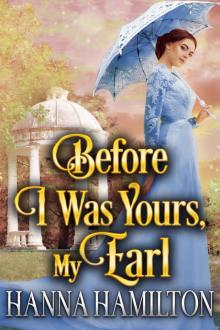 Before I Was Yours, My Earl: A Historical Regency Romance Novel
Before I Was Yours, My Earl: A Historical Regency Romance Novel The Stolen Diadem of a Castaway Lady: A Historical Regency Romance Novel
The Stolen Diadem of a Castaway Lady: A Historical Regency Romance Novel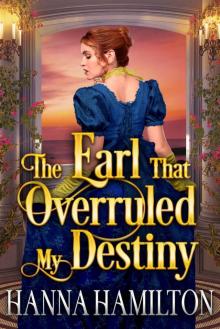 The Earl That Overruled My Destiny
The Earl That Overruled My Destiny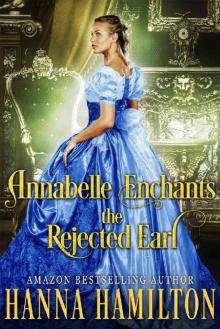 Annabelle Enchants the Rejected Earl: A Historical Regency Romance Novel
Annabelle Enchants the Rejected Earl: A Historical Regency Romance Novel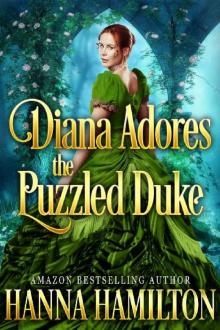 Diana Adores the Puzzled Duke_A Historical Regency Romance Novel
Diana Adores the Puzzled Duke_A Historical Regency Romance Novel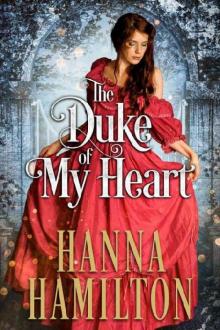 The Duke of My Heart (Regency Romance)
The Duke of My Heart (Regency Romance)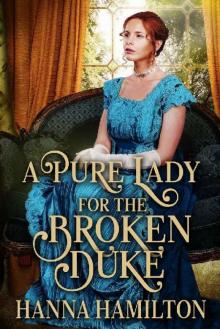 A Pure Lady for the Broken Duke
A Pure Lady for the Broken Duke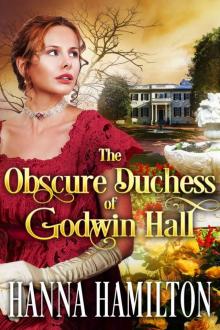 The Obscure Duchess of Godwin Hall_A Historical Regency Romance Novel
The Obscure Duchess of Godwin Hall_A Historical Regency Romance Novel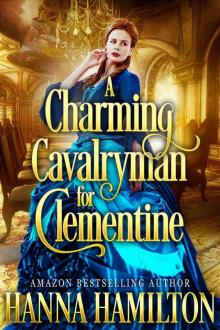 A Charming Cavalryman for Clementine_A Historical Romance Novel Based on True Events
A Charming Cavalryman for Clementine_A Historical Romance Novel Based on True Events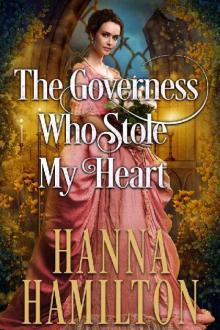 The Governess Who Stole My Heart: A Historical Regency Romance Novel
The Governess Who Stole My Heart: A Historical Regency Romance Novel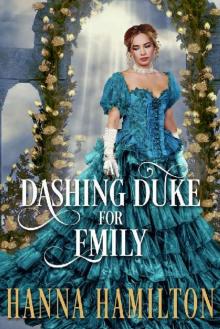 A Dashing Duke for Emily_A Historical Regency Romance Novel
A Dashing Duke for Emily_A Historical Regency Romance Novel A Dashing Duke for Emily
A Dashing Duke for Emily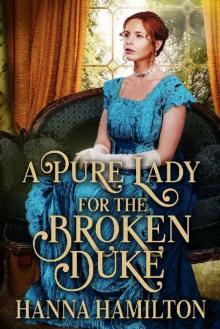 A Pure Lady for the Broken Duke_A Historical Regency Romance Novel
A Pure Lady for the Broken Duke_A Historical Regency Romance Novel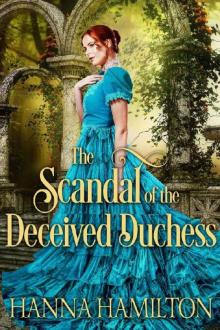 The Scandal of the Deceived Duchess: A Historical Regency Romance Novel
The Scandal of the Deceived Duchess: A Historical Regency Romance Novel The Legend of the Betrayed Duchess_A Historical Regency Romance Novel
The Legend of the Betrayed Duchess_A Historical Regency Romance Novel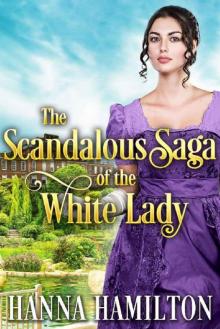 The Scandalous Saga of the White Lady: A Historical Regency Romance Novel
The Scandalous Saga of the White Lady: A Historical Regency Romance Novel